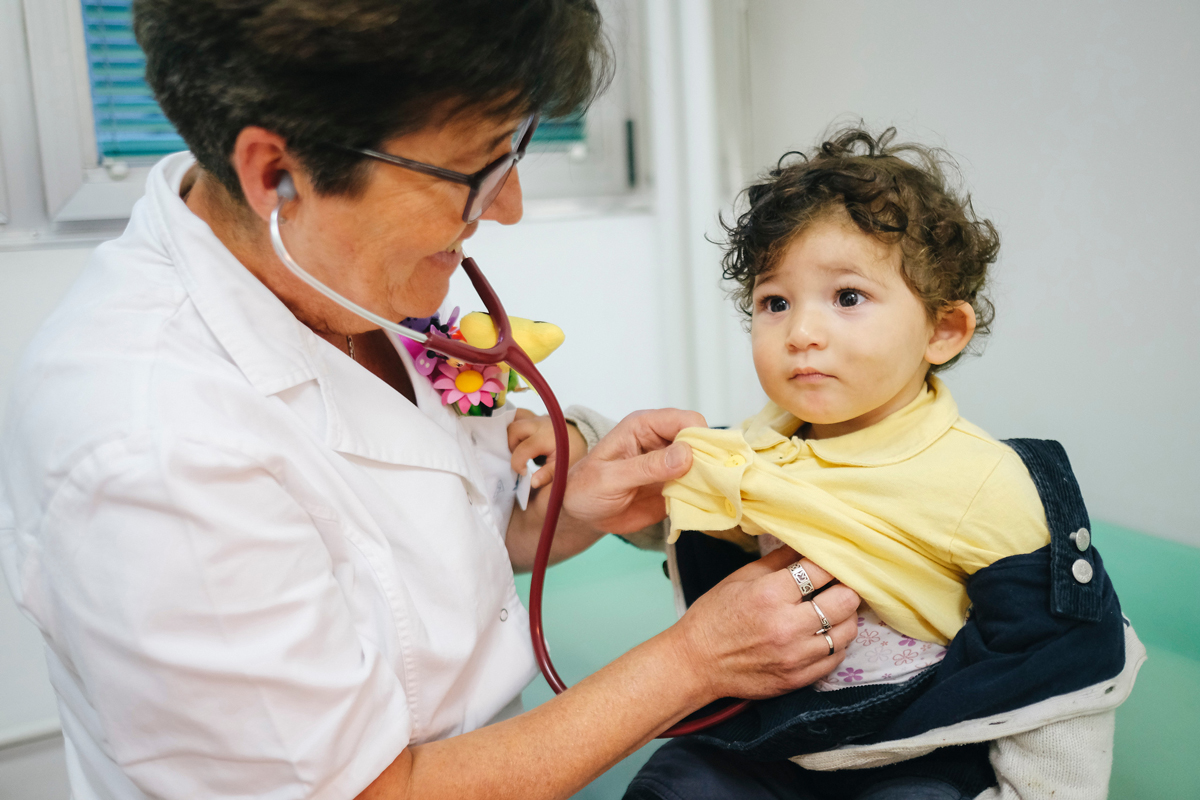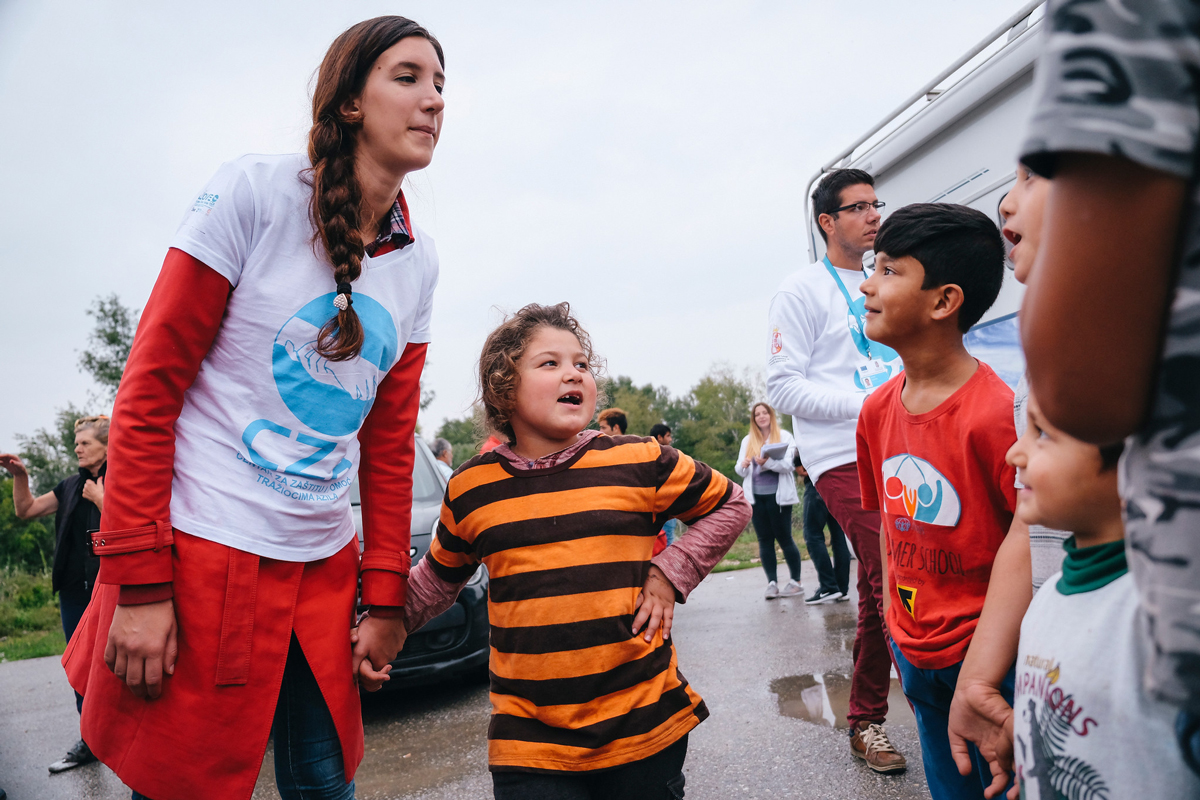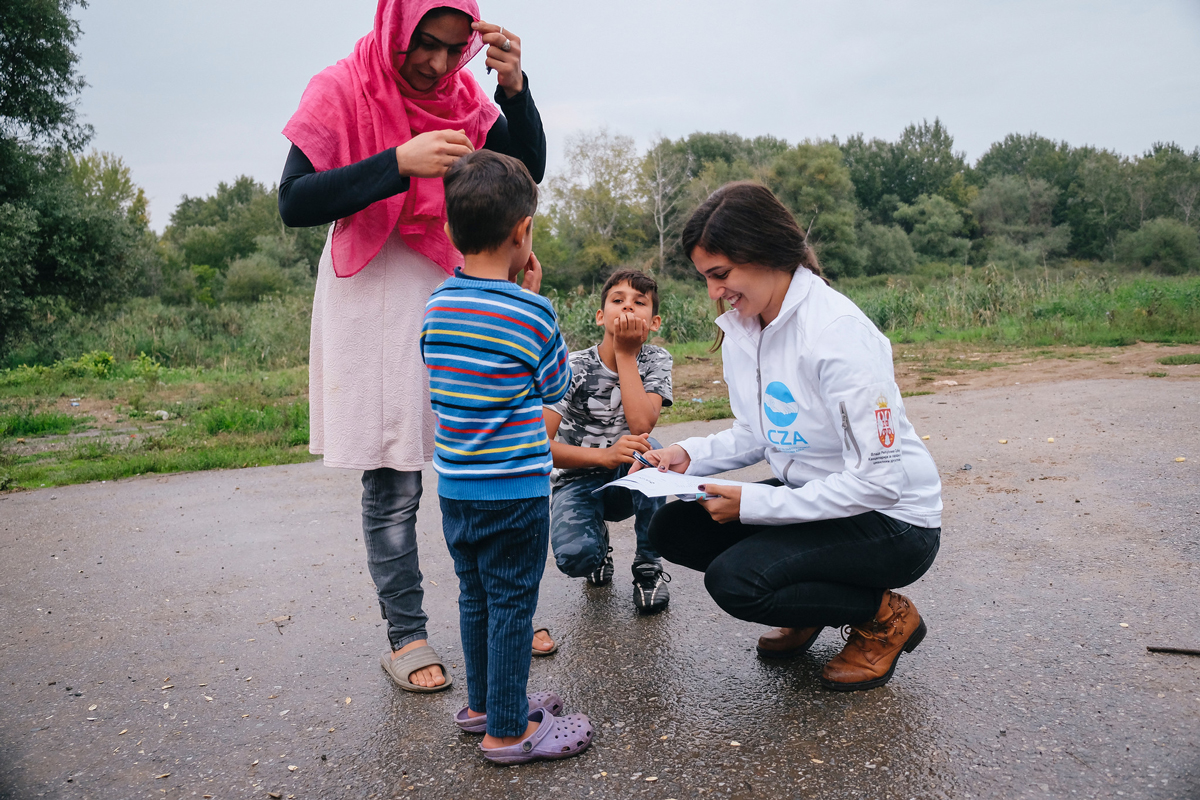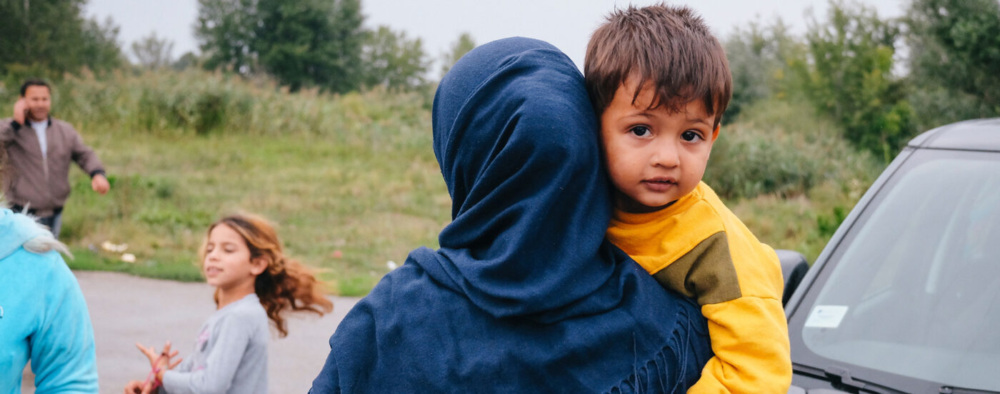
Safety and wellbeing
Safety and wellbeing
This blog post was written by Marketing and Communications Intern Anna Kessler and Senior Communications Officer Kyra Gurney.
When COVID-19 vaccines first became widely available in Serbia in early 2021, they were only offered to Serbian citizens. Refugees staying in camps, where the living conditions increased the risk of getting infected with the virus, did not have access to this lifesaving protection.
In response, Asylum Protection Center (APC) – a local nonprofit that provides legal, psychosocial, integration, and humanitarian assistance to refugees and asylum seekers – launched a media campaign.
“We initially reacted in the media to inform the public about the needs of refugees who were neglected in all this chaos,” explained Rados Djurovic, APC’s Executive Director. In media interviews, the APC team stressed that refugees living in camps were vulnerable to COVID-19 and argued that they should be prioritized for vaccination.
APC lawyers also analyzed the government website to register for vaccine appointments and determined that nothing on the site legally prevented asylum seekers and refugees from signing up. APC began to help asylum seekers and refugees living in private accommodations outside the camps to register and accompanied them to appointments while also explaining to hospitals why they should inoculate this population. The organization then publicized these efforts on social media. With APC’s support, the first refugees started to receive vaccines, setting the steps for others to follow.
[image_caption caption=”Asylum Protection Center helps families seeking asylum in Serbia access medical care. © Petar Markovic” float=””]

[/image_caption]
In the face of mounting public pressure, the Serbian government made vaccines collectively available to refugees in camps in March, just a few months after they had first been offered to Serbian citizens. Once the vaccines were approved for younger age groups, refugee families were also able to vaccinate their children.
Despite the pandemic, tens of thousands of refugees entered Serbia in 2021, fleeing conflicts and a lack of economic opportunities in Afghanistan, Syria, and other countries. Many traveled north through Serbia in an effort to reach neighboring Croatia, Hungary, and Romania, which are part of the European Union. A smaller number have stayed in Serbia to build a new life.
COVID-19 is far from the only danger refugees face on their journey. Children, particularly unaccompanied minors, often experience violence and exploitation. They risk falling into the hands of smugglers and traffickers and sometimes experience mistreatment in refugee camps.
Of the more than 60,000 migrants and refugees who entered Serbia last year, according to APC figures, at least 6,000 were children and youth below the age of 18. Since its work first began, APC has supported both the children passing through the country and those staying to apply for asylum. In addition to providing young people with psychosocial support and legal aid, APC has also hosted social inclusion events – including soccer matches and cooking and photography activities – to help refugees meet locals and feel more integrated in Serbian society. APC has also been organizing workshops for kids on a range of topics including the Serbian language and preparing for school.
[image_caption caption=”An Asylum Protection Center staff person providing refugee children with assistance in 2017. © Petar Markovic” float=””]

[/image_caption]
For the children who stay in Serbia, one of the biggest challenges is access to education. The Serbian government tries to prevent refugee children from enrolling in school in the hope that their families will eventually leave for the European Union, Rados said. In addition, local schools sometimes don’t know how to enroll refugee children and don’t have interpreters. APC provides families with legal assistance and information to navigate these challenges and offers support to teachers so they can better help refugee students.
“We try to fill in those gaps and to be someone who is collaborating and facilitating that communication with parents, while supporting the integration of children into the educational system and local schools,” explained Jovana Vincic, an APC Program Manager.
APC was founded in 2007 by young local lawyers, psychologists, and social workers who had experience working with refugees abroad. At the time, the asylum system in Serbia did not yet exist. Serbia implemented an asylum law in 2008, and during this period the first refugees began arriving in the country. Many of them received help from APC, which grew quickly to meet increasing demand for its services.
[image_caption caption=”An Asylum Protection Center staff person providing refugee children with assistance in 2017. © Petar Markovic” float=””]

[/image_caption]
APC first became a GFC partner in 2012. The organization is currently part of GFC’s Reducing Violence Against Migrant Children in Southeast Europe initiative, which is a partnership between the Swedish Postcode Foundation and GFC.
In addition to offices in Belgrade, Presevo, and Subotica, APC has mobile teams that deploy across the country and a network of more than 150 volunteers.
“We can move fast when there is a need,” Rados said. “We are ready to reach people where they are and respond almost immediately.”
Today, Rados and Jovana said, refugees in Serbia face more challenges than ever before, and APC’s work has become increasingly difficult in the face of anti-immigration policies. But the APC team still finds lots of reasons to hope.
“Every time when a kid learns Serbian, when they share that they have Serbian friends, that they are invited to some gatherings, that they started their new life here, it’s something that’s confirming that this is really great work,” Jovana said.
Header photo: A refugee mother and child who received support from Asylum Protection Center in 2017. © Petar Markovic
